15 & 16: A couple of Faustian pacts...
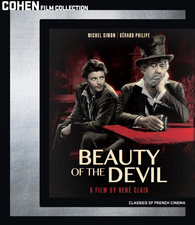
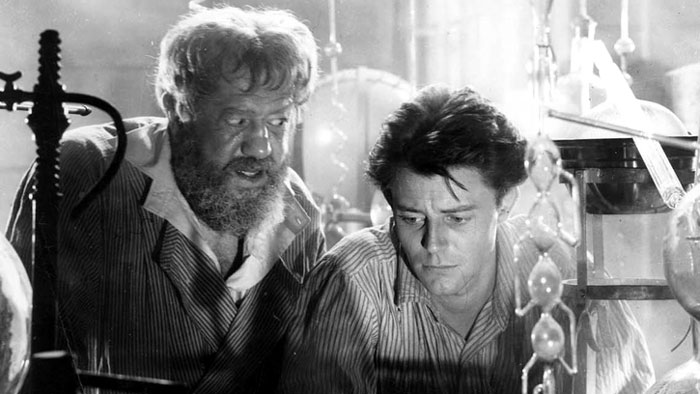 “The true Hell is here on Earth. Poverty, loneliness, evil men…”
“The true Hell is here on Earth. Poverty, loneliness, evil men…”
Rene Clair’s lavish adaptation of the Faust myth,
La Beaute du Diable plays it as black comedy rather than tragedy and finds in Michel Simon, one of French cinema’s sacred monsters, the perfect casting for one of literature’s profane ones. Looking like a dapper 19th Century version of Alec Guinness in The Fall of the Roman Empire with added rabbit’s teeth (something he plays on near the end as he delights in popping his head up as if emerging from a warren with demonic glee), it’s not a subtle performance, but it’s a perfectly judged one, at first capturing the ageing Faust’s frailty of body and mind and suddenly reinvigorated once Mephistopheles takes his form, as determined to steal every scene as his second-rate demon is to steal souls, whether he’s reduced to helpless laughter at the dancing Devil in a ballet or gleefully discussing the disastrous consequences for mankind of each new invention or discovery Faust comes up with. Not that he has everything his own way, with Faust proving reluctant to commit body and soul. At first he tries to tempt him to sign by making him miserable until a diabolical stroke of inspiration from his boss shows him the better way is to give him comfort, luxury and love and then take it away from him. But every contract has its loophole…
Despite the devils getting all the best lines, Simon gets surprisingly strong competition from his co-star in what is often the blander role. As the rejuvenated Faust/Henri, Gerard Philipe is particularly impressive, capturing Simon’s old man’s body language until he gets used to his new, younger body and subsequently both intoxicated and abhorred by the changes his deal wreaks on his personality. It helps that, while the film is still very much a period piece, his Faust is very much a post-atomic age figure, reputedly based on nuclear scientist-turned-ban the bomb campaigner Fréderic Joliot-Curie, a claim given more than a little credibility by Faust’s vision of a future where his desire to save the world will lead to its destruction. But for all the nightmare visions of a future where scientific progressed is unrestrained by any considerations of conscience or consequence there’s a lightness of touch to the film that prevents it from becoming a hectoring lecture, Clair wrapping the dark magic in playful visuals and black comedy as he deftly unfolds and reworks the narrative and timescale as his protagonists’ perspectives change.
As the 49-minute documentary on Cohen Media’s beautifully restored Bluray reveals, it was not a happy production: Clair and Philipe were both shy and thoughtful, Philipe’s shyness manifesting itself as try to overassert himself to hide his discomfort, while Simon’s impulsiveness and determination to provoke his co-workers and hit on most of the women in the film was a complete anathema to both of them. Yet the tension clearly worked in the film’s favour, mirroring the moral tug of war between Faust and Mephistopheles rather than pulling the film apart. As lavishly staged French fantasies for adults go, it forms the missing part of an unholy trinity alongside Cocteau’s
La Belle et la Bete and Carné’s
Les Visiteurs du Soir. Talking of which...
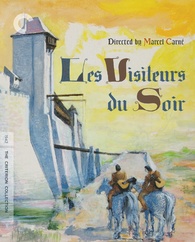
 “Could you be the cause of all these troubles?”
“Could you be the cause of all these troubles?”
“What do you expect? No-one loves me. I amuse myself as best I can.”
Overshadowed outside France by both that other Medieval romantic fantasy and its director’s
Les Enfants du Paradis but revered in its homeland as one of the great films of the war years, Marcel Carne’s
Les Visiteurs du Soir has been particularly hard for non-French speakers to see for years: not released on video and unseen on UK TV for three decades, it’s only with Criterion’s largely unheralded DVD and Blu-ray release that many will have got the chance to finally see his tale of demons and marvels. While it doesn’t cast as magic or as poetic an ethereal spell as Cocteau’s La Belle et la Bete, it’s still an impressive fable whose added resonance for a Nazi-occupied population is easy to see even if Carne and co-writer Jacques Prevert always insisted that no anti-Nazi subtext was intended, the Medieval setting simply the easiest way to get around the German censors.
The plot is simple: two minstrels arrive at a castle, whose occupants are celebrating the betrothal of the Baron’s daughter initially unaware that the two visitors (Arletty and Alain Cuny) have been sent by the Devil to sow discord by loving and destroying them and leaving the Devil to pick up the tab. Not that they don’t have plenty of raw material to work with: despite the jollity of the banquets and the lack of work for the executioner, the castle is almost underpinned by sadness. The Baron (Fernand Ledoux) is still mourning his lost wife, the servant girl all too aware that her plainness ensures the page she loves won’t even look at her and the groom (Marcel Herrand) is more interested in songs of hunting and killing than of love, confused by his bride-to-be Marie Dea’s kindness towards unfortunates and dismissing her dreams because
“Dreams are dangerous and useless. I never dream myself.” For all the elegance and fairytale settings, it’s a cruel world where love is a weapon to make people tear themselves apart:
“It isn’t worth a single tear. It’s nothing but a story invented to amuse the Devil.” It’s a game the envoys have played so many times they’re working from the same script, telling each new victim
“As soon as I saw you, I knew why I’d travelled so far. I thanked Heaven for leading me to you.”
Yet the envoys aren’t ethereal symbolic figures but have their own tortured dysfunctional relationship of recriminations and mockery, revisiting their failed and false romance on their victims. Arletty enjoys her work, particularly if it means leading men to their death or to the very place she has come from, but Cluny is increasingly tortured by the deal he has made with the Devil, even more so when he genuinely falls in love with the bride-to-be. From then on the film becomes a battle for hearts and souls as Jules Barry’s Devil enters the fray, appearing everywhere at once to mislead, corrupt or gently scold the mere mortals. It’s easy to see why so many saw him as Hitler incarnate, making empty promises and offering those who collaborate with him every comfort but never able to still the pure hearts that defy him. He’s a cheerful soul, certain of his eventual victory and uncomprehending of the notion of resistance, but thanks to Jacques Prevert’s dialogue he doesn’t get all the best lines – most of those, surprisingly, go to the lovers, true or false.
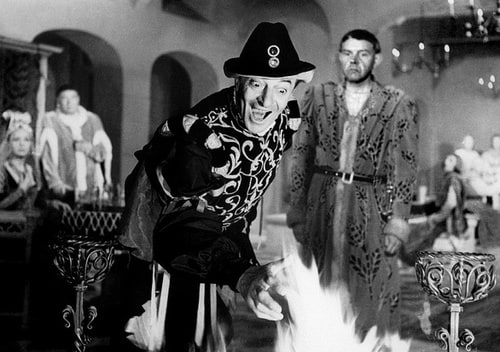
It’s a surprisingly lavish production for a French wartime film, Trauner’s design and Roger Hubert’s photography giving it a deceptively simple and attractive look for a film filled with betrayal, hopeless longing and torment. It generally favors simpler special effects than you might expect from a period fable, but at their best, such as when the envoys stop time to steal a tryst with the groom and bride-to-be, they’re quietly effective. At times the film threatens to lose its grip and some of the dungeon scenes with a distressed Cluny stray perilously close to bad acting, but the spell is never broken and its easy to see why the film found such a special place in French cinema with its own brand of dark magic and cruel love. Oh, and look out for a young Simone Signoret and Alain Resnais as extras in the banquet scene.
Aside from the customary booklet there’s also a 37-minute talking heads documentary with friends of Carne and Prevert and film historians that provides much information and anecdotes about the film’s tortuous development – Carne had been having trouble finding a project that would pass the German censors after getting out of his contract with the German-backed Continental Films while Jacques Prevert and composer Joseph Kosma had been collaborating on an unrealised version of Puss in Boots – and its difficult production, which was complicated by wartime shortages (fabric for the costumes was almost impossible to find while the food in the banquet scenes had to be sprayed with toxic chemicals to stop the starving extras eating it), Vichy bureaucracy (because it was shot in both Occupied and Unoccupied France), anti-Semitic laws (both Kosma and production designer Alexander Trauner had to use fronts because it was illegal for Jews to work in French films) and scheduling (Jules Berry was making three films at the same time, shooting one in the morning, one in the afternoon and another in the evening and couldn’t remember his lines), and surprisingly rapturous reception from both right and leftwing critics.
It even covers the problems of exhibiting films in wartime – newsreels were shown with the lights on and a gendarme in attendance to stop the audience booing the Nazis, while only a limited number of tickets were sold to ensure that the nearest air raid shelters didn’t get filled up, making its hugely successful run – it was the biggest French hit of the war years – all the more remarkable. The documentary is not particularly strikingly made, but it tells the stories in a pleasingly straightforward fashion and puts the film in its historical perspective even if the transfer is obviously taken from a video master. The film’s original French trailer (which includes an extended version of the Devil’s arrival) fares worse in the picture quality stakes, looking like it was mastered from a juddery dialup internet download, but the transfer on the film itself is a beautiful restoration job with clear, sharp detail, plenty of depth and no obvious signs of digital tinkering.
























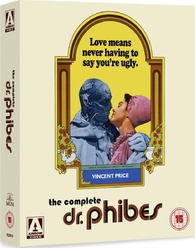









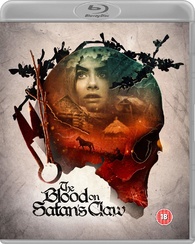





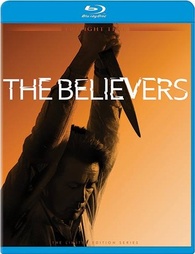





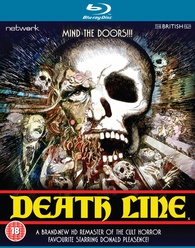



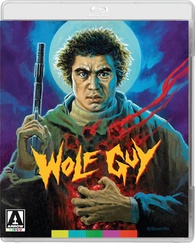

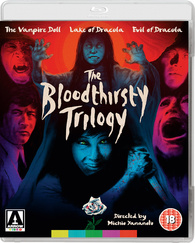


 Linear Mode
Linear Mode

